


Note:
ArcGIS Insights is deprecated and will be retiring in 2026. For information on the deprecation, see ArcGIS Insights deprecation.
See the following sections to learn which map or chart you should make to perform your analysis:
Analyze your data
The tables in the sections below describe how you can do the following:
- Understand the quantities in your data
- Understand the relationships in your data
- Understand the change in your data
- Understand the interactions in your data
- Understand the distribution of your data
- Understand the proportions in your data
Understand the quantities in your data
To see the size, amount, or degree of a variable, use the following chart types:
| Icon | Chart type | Requirements | Description | How to create it |
|---|---|---|---|---|
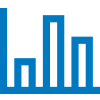 | Unique categories | Compare aggregated quantities between categories and identify broad differences at a glance. | Create a chart using a string field. | |
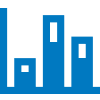 | Two unique categories | Compare aggregated quantities between categories or subcategories and identify broad differences at a glance. | Create a chart using two string fields. | |
 | Unique categories | Compare aggregated quantities in a hierarchical structure by comparing the size and placement of categories. | Create a chart using a string field. | |
 | Unique categories | Compare aggregated quantities across categories using bubble size to represent magnitude. | Create a chart using a string field. | |
 | Two unique categories | Compare aggregated quantities as they intersect with two categories in a matrix form. Patterns in the data can be quickly discerned as the quantities change across cells. | Create a chart using two string fields. | |
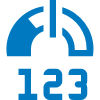 | Unique categories or numbers | Compare the measure of a key indicator to a target value. | Create a chart using a number, rate/ratio, or string field. |
To see the size, amount, or degree of data spatially, use the following map types:
| Icon | Map type | Requirements | Description | How to create it |
|---|---|---|---|---|
 | Numbers | Compare the quantities of your data within a spatial context. The size of the symbol corresponds to the magnitude of the data value. | Create a map using a number field. | |
 | Aggregation map | Two spatial datasets
| Compare aggregated quantities within a spatial context. A graduated symbol is assigned to each boundary area based on the magnitude of the aggregated data. | Use Spatial Aggregation. |
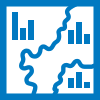 | Multiple categories for a single feature | Compare the quantities of categorical data within a feature and between features. | Create a map using a string field and change the symbol type to Columns. |
Understand the relationships in your data
To see the connection or similarity between variables, use the following chart types:
| Icon | Chart type | Requirements | Description | How to create it |
|---|---|---|---|---|
 | Two unique categories | Visualize the relationships between categories and allow comparisons of similarities within a dataset or between different groups of data. | Create a chart using two string fields. | |
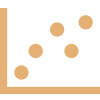 | Two numbers | Assess the relationship between numbers visually and statistically, including the correlation between variables. | Create a chart using two number fields. | |
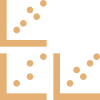 | Two or more numbers | Create multiple scatter plots at once to analyze the relationship between variables, while also comparing the relationships themselves. | Create a chart using three to five number fields. | |
 | Two unique categories | Visualize and assess the connections between nodes in a network. | Create a chart using two string fields. | |
 | Two or more unique categories | Identify which nodes are connected and the magnitude of the connection. | Create a chart using two or more string fields. |
To see the connection or similarity of spatial data, use the following map types:
| Icon | Map type | Requirements | Description | How to create it |
|---|---|---|---|---|
 | Proportions, rates, or ratios | Visualize the way ratios or proportions are distributed spatially to discern spatial patterns. | Create a map using a rate/ratio field, or using a number and normalizing the data. | |
 | Flow map | Two location fields in the same dataset | Visualize and assess the magnitude and direction of connections between nodes in a network within a spatial context. | Create a link map with direction. |
 | Spider lines map | Either of the following:
| Visualize and assess the magnitude of connections between nodes in a network within a spatial context. | Create a link map without direction, or use Find Nearest. |
Understand the change in your data
To see how your data changes between categories or over time, use the following chart types:
| Icon | Chart type | Requirements | Description | How to create it |
|---|---|---|---|---|
 | Unique categories | See the quantities of your categorical data and discern the differences between categories. | Create a chart using a string field. | |
 | Two unique categories | See the quantities of your categorical data and discern the differences between and within categories. | Create a chart using two string fields. | |
 | Two unique categories | Chart the intersection of categorical data to see trends in two dimensions. | Create a chart using two string fields. | |
 | Time data or categories | See the trends in your data over two different time intervals. | Create a chart using two date/time subfields. | |
 | Unique categories | See the values of your categorical data with an emphasis on trends between categories. | Create a chart using a string field. | |
 | Time-enabled data | See how your data changes over time and discern patterns or trends. | Create a chart using a date/time field. | |
 | Decomposed time series graph | Time-enabled data | Decompose your time series into trend, seasonal, and remainder components. | |
 | Forecasted time series | Time-enabled data | Predict future values for your time series. | Use Forecast. |
 | Time series with moving average | Time-enabled data and numbers | Create a smoothed time series or impute missing values in your data. | Use Moving Average. |
 | Two datasets with the same unique categories | See the interaction between the quantities and trends in your data. | Create a line graph and a column chart on the same card. |
To see how your data changes spatially, use the following map types:
| Icon | Map type | Requirements | Description | How to create it |
|---|---|---|---|---|
 | Numbers | Visualize the quantities in your data and see the way those quantities change with location. | Create a map using a number field. | |
 | Density map | Points | Calculate the density of your data and see how the density changes with location. | Use Calculate Density. |
 | Points | Visualize spatial distributions based on areas with the most and least number of points, and how those distributions relate to location. | Create a map and change Symbol type to Heat Map. | |
 | Points | Aggregate your data into equally sized bins to see overall spatial trends across your data. | Create a map and change Symbol type to Bins. | |
 | Multiple categories for a single feature | Compare the quantities of categorical data within a feature and between features. | Create a map using a string field and change the symbol type to Columns. |
Understand the interactions in your data
To see the flow of information between variables, use the following chart types:
| Icon | Chart type | Requirements | Description | How to create it |
|---|---|---|---|---|
 | Two unique categories | See the quantity and direction of interactions between categories. | Create a chart using two string fields. | |
 | Two unique categories | Identify interactions and quantify the relationship of nodes relative to each other. | Create a chart using two string fields. | |
 | Two or more unique categories | Identify the volume of flow between nodes. | Create a chart using two or more string fields |
To see the flow of information between places, use the following map types:
| Icon | Map type | Requirements | Description | How to create it |
|---|---|---|---|---|
 | Flow map | Two location fields in the same dataset | Identify relationships in spatial data and see the direction that information flows through a network. | Create a link map with direction. |
 | Spider lines map | Either of the following:
| Identify relationships in spatial data, either through geographical proximity or attribute connections. | Create a link map without direction, or use Find Nearest. |
Understand the distribution of your data
To see how your data is arranged numerically, use the following chart types:
| Icon | Chart type | Requirements | Description | How to create it |
|---|---|---|---|---|
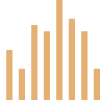 | Numbers | See the distribution of your numerical data and make comparisons to a bell curve, or normal distribution. | Create a chart using a number field. | |
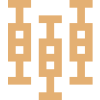 | Numbers | See the distribution of your numerical data and identify basic statistical values. | Create a chart using a number field. | |
 | Unique categories and numbers | See the distribution of your numerical data by category. | Create a chart using a string field and a number field. |
To see how your data is arranged spatially, use the following map types:
| Icon | Map type | Requirements | Description | How to create it |
|---|---|---|---|---|
 | Location field only | View your spatial data in its most basic form to identify where your data is located. | Create a map using a location field. | |
 | Proportions, rates, or ratios | Classify your proportional data to see how changes in the data interact with changes in location. | Create a map using a rate/ratio field, or using a number and normalizing the data. | |
 | Numbers | Classify your number data to see where the quantities are largest and smallest. | Create a map using a number field. | |
 | Points | Visualize your data based on the number of points and discern patterns based on spatial distribution. | Create a map and change Symbol type to Heat Map. | |
 | Density map | Points | Calculate the density of your point data and see how the density is distributed spatially. | Use Calculate Density. |
 | Unique categories | See how your data is distributed and determine how categories are affected by location. | Create a map using a string field. | |
 | Points | Aggregate your data into equally sized bins to see a generalized view of how your data is distributed across locations. | Create a map and change Symbol type to Bins. | |
 | Multiple categories for a single feature | See the distribution of categorical data within a feature and between features. | Create a map using a string field and change the symbol type to Columns. |
Understand the proportions of your data
To see the relative proportions of categories in your data, use the following chart types:
| Icon | Chart type | Requirements | Description | How to create it |
|---|---|---|---|---|
 | Unique categories | See your categories arranged proportionally to see the size of each relative to the whole. | Create a chart using a string field. | |
 | Unique categories | See the proportions of your categories through both size and hierarchical orientation. | Create a chart using a string field. |
To see the relative proportions of categories in your data spatially, use the following map types:
| Icon | Chart type | Requirements | Description | How to create it |
|---|---|---|---|---|
 | Multiple categories for a single feature | See the proportions of categorical data within a feature. | Create a map using a string field and change the symbol type to Columns. Display the columns by stacked percent. | |
 | Multiple categories for a single feature | See the proportions of categorical data within a feature. | Create a map using a string field and change the symbol type to Pies. |
Make a map
If you have a spatial dataset, you're ready to make a map.
| Icon | Map type | Requirements | Description | How to create it |
|---|---|---|---|---|
 | Location field only | Create a location map to see where your point, line, or area features are located. | Create a map using a location field. | |
 | Aggregation map | Two spatial datasets
| Create a spatial aggregation map to generalize your data and see big picture patterns. | Use Spatial Aggregation. |
 | Points | Create a binned map to see a quick, aggregated representation of how your data is distributed. | Create a map and change Symbol type to Bins. | |
 | Unique categories | Create a unique values map to see where point, line, or area features are located and what type they are. | Create a map using a string field. | |
 | Proportions, rates, or ratios | Create a choropleth map to see distributions of ratios or proportional data. | Create a map using a rate/ratio field, or using a number and normalizing the data. | |
 | Density map | Points | Create a density map to determine the density distribution of your point data. | Use Calculate Density. |
 | Flow map | Two location fields in the same dataset | Create a flow map to see the magnitude and direction of relationships between different locations. | Create a link map with direction. |
 | Points | Create a heat map to visualize areas with the most point features as the hottest. | Create a map and change Symbol type to Heat Map. | |
 | Numbers | Create a graduated symbol map to show symbols of graduated sizes to indicate numeric values. | Create a map using a number field. | |
 | Spider lines map | Either of the following:
| Create a spider lines map to see the connections between different locations. | Create a link map without direction, or use Find Nearest. |
 | Multiple categories for a single feature | See the distribution or proportion of categorical data within a feature and between features. | Create a map using a string field and change the symbol type to Columns. | |
 | Multiple categories for a single feature | See the proportions of categorical data within a feature. | Create a map using a string field and change the symbol type to Pies. |
Make a chart
You can make a chart with any dataset, whether it's spatial or nonspatial.
| Icon | Chart type | Requirements | Description | How to create it |
|---|---|---|---|---|
 | Numbers | Create a box plot to see the distribution and basic statistics for your numerical data. | Create a chart using a number field. | |
 | Unique categories | Create a bubble chart to compare the quantities of your categorical data. | Create a chart using a string field. | |
 | Bar and column chart | Unique categories | Create a bar or column chart to see an overview of your categorical data. | Create a chart using a string field. |
 | Two datasets with the same unique categories | Create a combo chart to see both quantities and trends for the same categorical variable. | Create a line graph and a column chart on the same card. | |
 | Two unique categories | Create a chord diagram to see directed relationships between categories. | Create a chart using two string fields. | |
 | Time data or categories | Create a data clock to see trends in your data over different periods of time. | Create a chart using two date/time subfields. | |
 | Unique categories | Create a donut chart to see the proportions of your categorical data. | Create a chart using a string field. | |
 | Two unique categories | Create a heat chart to see trends in the intersection of your categorical data. | Create a chart using two string fields. | |
 | Numbers | Create a histogram to see the frequency and distribution of your numeric data. | Create a chart using a number field. | |
 | Unique categories or numbers | Compare the measure of a key indicator to a target value. | Create a chart using a number, rate/ratio, or string field. | |
 | Unique categories | Create a line graph to see trends between categories in your data. | Create a chart using a string field. | |
 | Two unique categories | Create a link chart to identify the interactions and relationships with your data. | Create a chart using two string fields. | |
 | Two numbers | Create a scatter plot to analyze the relationship and correlation between two numeric variables. | Create a chart using two number fields. | |
 | Two or more numbers | Create a scatter plot to analyze the relationship and correlation between multiple numeric variables. | Create a chart using three to five number fields. | |
 | Two unique categories | Create a bar or column chart to see an overview of your categorical data, including subgroups. | Create a chart using two string fields. | |
 | Time-enabled data | Create a time series graph to see trends in your data over time. | Create a chart using a rate/ratio field. | |
 | Unique categories | Create a treemap to see the proportions of your categorical data through both size and hierarchical orientation. | Create a chart using a string field. |